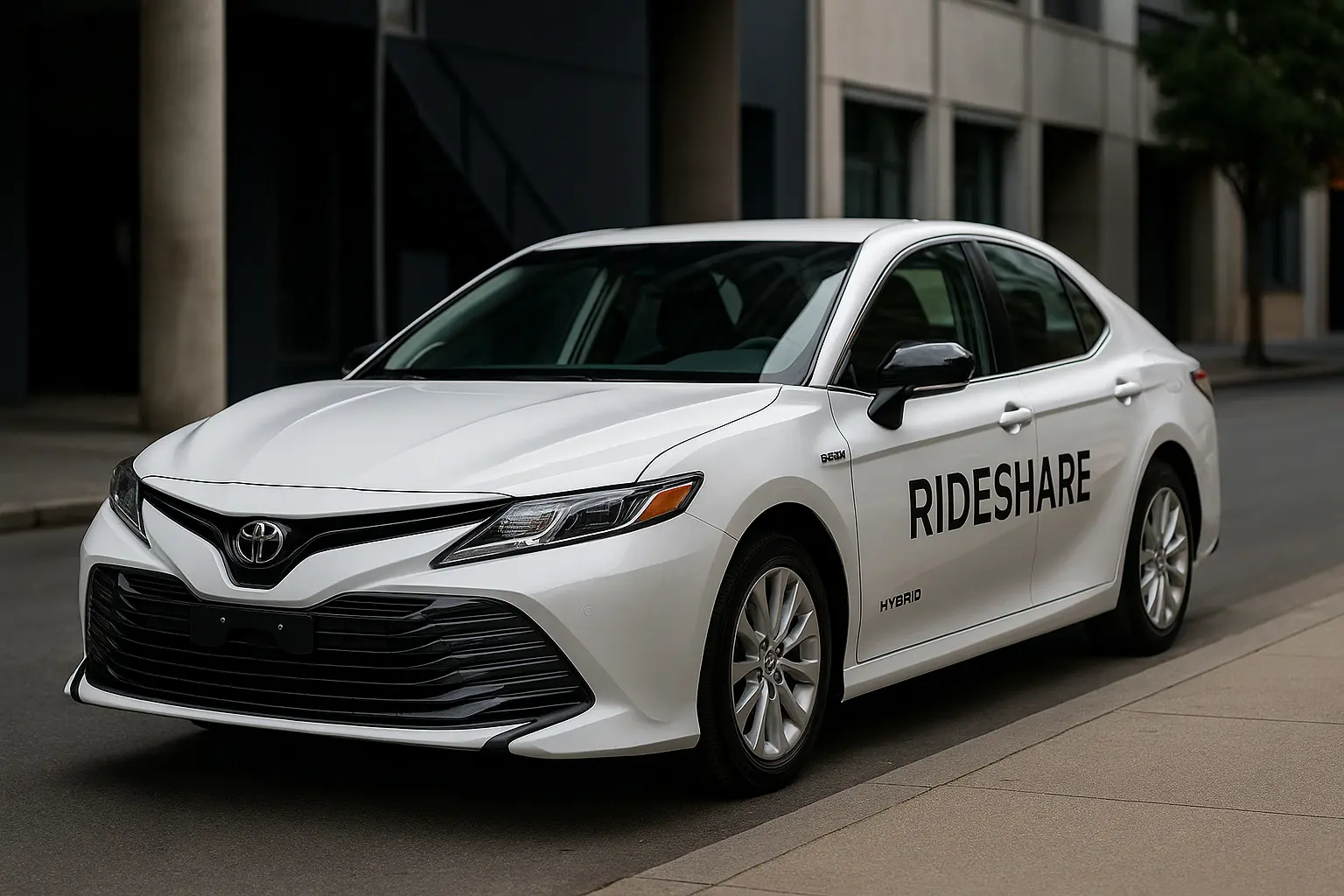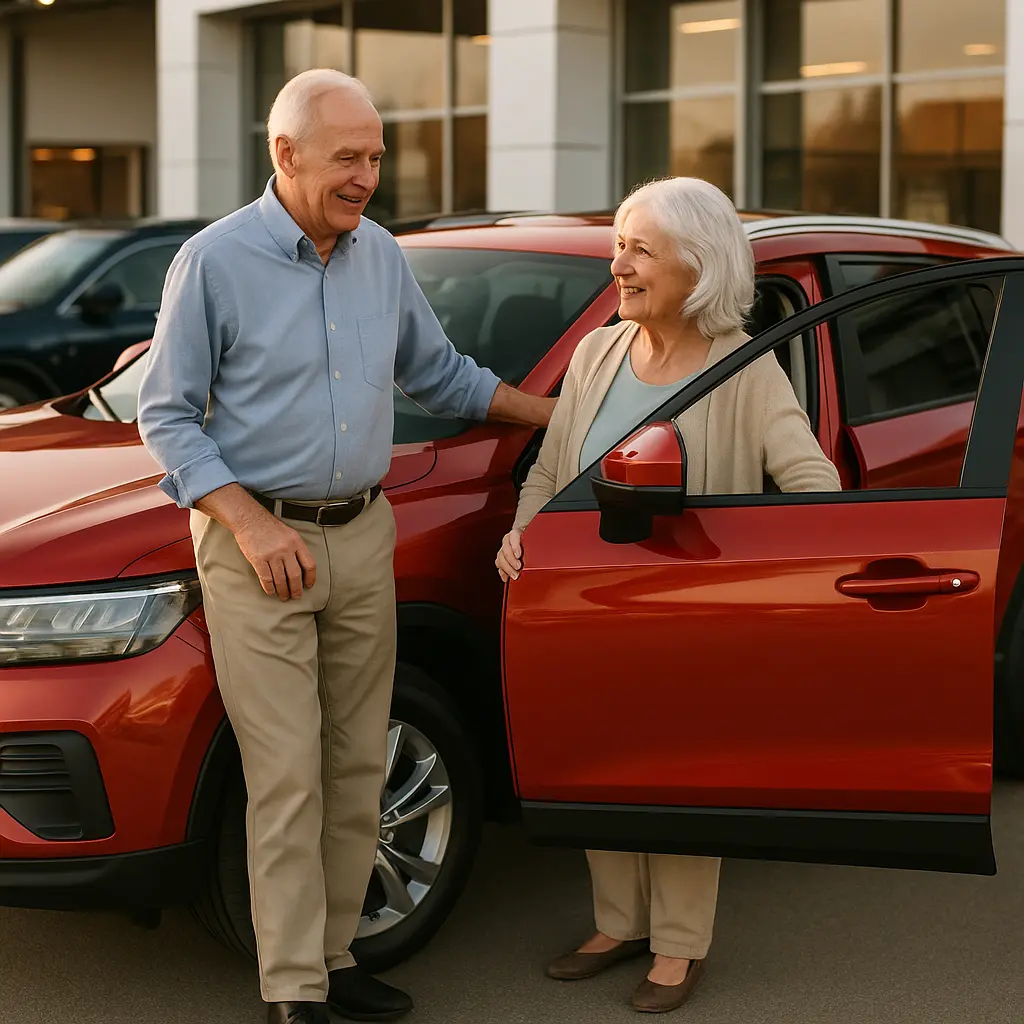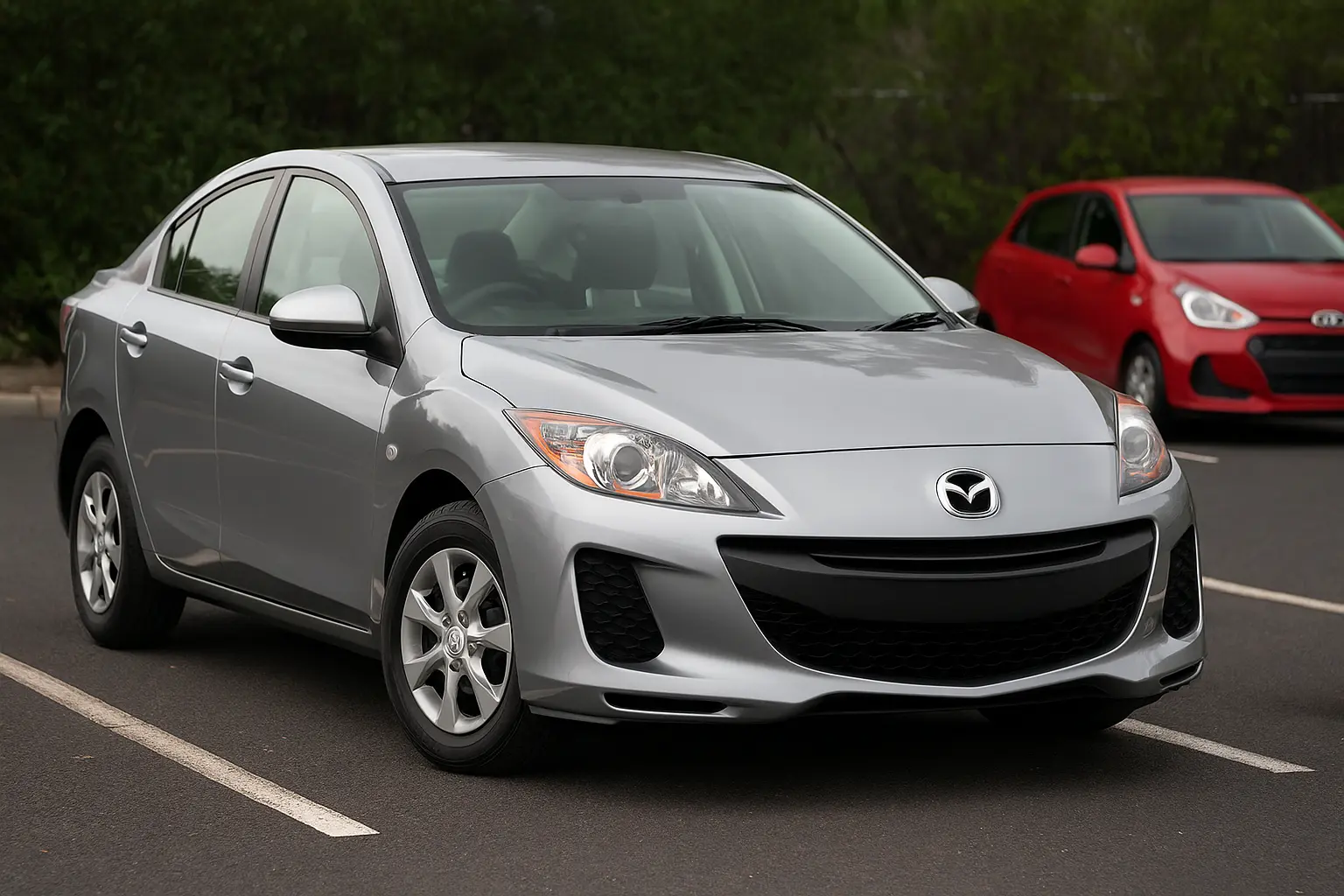What Makes a Car Good for Rideshare Driving in Australia in 2025

With the growing popularity of rideshare platforms like Uber, Ola, and DiDi, more Aussies are turning to part-time or full-time driving to earn an income. But your success in the rideshare business isn’t just about the hours you put in or the city you drive in – it starts with choosing the right car.
In 2025, a rideshare-friendly car must balance comfort, fuel efficiency, cost-effectiveness, and compliance with platform regulations. Whether you're a new driver looking to enter the market or a seasoned pro planning to upgrade your vehicle, this comprehensive guide breaks down everything you need to know.
🚗 1. Why Car Choice Matters for Rideshare
Choosing the wrong car for rideshare can hurt your profits, get you deactivated from platforms, or cost you a fortune in maintenance and fuel. Your vehicle is your business tool — and in a service-based gig, it also impacts your ratings and tips.
A good rideshare car should:
- Comply with all Uber/Ola/DiDi vehicle standards
- Deliver excellent fuel economy or electric range
- Offer generous interior space for passengers and luggage
- Have strong safety ratings and low running costs
- Provide a comfortable ride, even after long hours behind the wheel
✅ 2. Basic Uber and Ola Vehicle Requirements in Australia (2025)
Each platform has specific requirements for cars in Australia. These can vary slightly by city or state, but the general guidelines include:
🧾 General Eligibility (2025)
- Model Year: Must be 2009 or newer (UberX), though newer cars are preferred
- Seats: Minimum of 4 doors and 5 seatbelts
- Condition: No cosmetic damage, working AC, fully operational windows
- Inspection: Passed vehicle inspection by authorised service providers
- Registration: Valid Australian registration and third-party insurance
- Uber Comfort/UberXL: Requires newer, roomier cars (often SUVs or sedans)
Pro Tip: Check the Uber Vehicle Requirements page or app to verify the latest compliance details per city.
🔍 3. Top Features to Look for in a Rideshare Car
🛋️ a. Interior Comfort and Passenger Space
A roomy cabin means happy passengers – and higher ratings. Look for:
- Rear legroom: Especially important for taller passengers
- Rear air vents: Helps keep passengers comfortable
- Flat floors: Avoids centre humps that limit legroom
- Quiet cabins: Reduces fatigue for both drivers and riders
💼 b. Boot Space
Whether it’s airport runs or grocery drops, cargo room matters. Prioritise cars with:
- At least 400L boot capacity
- Split-fold rear seats for added flexibility
- Hatchbacks or small SUVs often offer clever storage configurations
🔌 c. USB Ports and Phone Holders
Multiple charging ports (preferably in the rear), phone mounts, and wireless charging pads are increasingly expected by passengers.
📱 d. Infotainment and Navigation
Built-in navigation, Apple CarPlay, and Android Auto integration help you:
- Navigate faster
- Stream music for ambiance
- Safely answer customer calls en route
🚦 e. Safety Tech
Advanced driver-assistance systems (ADAS) are crucial when driving long hours:
- Autonomous Emergency Braking (AEB)
- Blind-spot monitoring
- Rear cross-traffic alert
- Lane keep assist
- Reversing camera + parking sensors
⛽ 4. Fuel Efficiency and Operating Costs
Fuel is one of the biggest ongoing costs for any rideshare driver. In 2025, you’ve got three primary choices:
1. Petrol Cars
Still popular due to lower upfront cost and widespread availability.
- Best For: Short trips or infrequent driving
- Drawback: Fuel costs can add up quickly
Top Picks:
- Toyota Corolla Sedan
- Hyundai i30
- Kia Cerato
2. Hybrid Cars
Hybrids have become the go-to choice for rideshare in urban Australia.
- Best For: Stop-start city traffic
- Pros: Low fuel usage, quiet cabin, reliable
- Cons: Slightly higher purchase price
Top Picks:
- Toyota Camry Hybrid
- Toyota Corolla Hybrid
- Honda Accord Hybrid
3. Electric Vehicles (EVs)
Increasingly popular thanks to state rebates and lower running costs.
- Best For: High-mileage full-time drivers
- Pros: Minimal servicing, cheaper per km, quiet ride
- Cons: Charging time and infrastructure (still developing in some areas)
Top Picks:
- BYD Dolphin
- Tesla Model 3
- MG4 EV
- Hyundai Kona Electric
💸 5. Cost of Ownership
When selecting your rideshare car, don’t just focus on the sticker price. Consider:
| Cost Factor | Consideration for Rideshare |
|---|---|
| Fuel Costs | Hybrids and EVs often win here |
| Insurance Premiums | Commercial or rideshare insurance can cost more |
| Servicing & Maintenance | EVs cost less to maintain; hybrids are reliable |
| Depreciation | Choose models with good resale value |
| Parts Availability | Common models are cheaper and faster to repair |
👨👩👧👦 6. Best Body Types for Rideshare in 2025
🚙 SUVs
- Pros: Higher ride height, spacious interior
- Cons: Lower fuel economy
- Great Options: Toyota RAV4 Hybrid, Mitsubishi Outlander, MG ZS EV
🚗 Sedans
- Pros: Great boot space, smooth ride
- Cons: Low seating height may bother some passengers
- Great Options: Toyota Camry, Honda Civic
🚘 Hatchbacks
- Pros: Easy to park, good city fuel efficiency
- Cons: Limited luggage space
- Great Options: Kia Cerato Hatch, Hyundai i30, Mazda3 Hatch
📈 7. Best Rideshare Cars in Australia for 2025
Here are our top recommendations across multiple budget and fuel types:
| Car Model | Type | Fuel/Energy | Why It’s Great for Rideshare |
|---|---|---|---|
| Toyota Camry Hybrid | Sedan | Hybrid | Comfort, huge boot, unbeatable fuel economy |
| BYD Dolphin | Hatchback | Electric | Budget EV with good range and modern tech |
| Toyota Corolla Hybrid | Sedan/Hatch | Hybrid | Proven reliability, low running costs |
| MG ZS EV | SUV | Electric | Affordable entry-level electric SUV |
| Kia Niro Hybrid | SUV | Hybrid | Stylish and practical with decent fuel savings |
| Hyundai i30 | Hatch/Sedan | Petrol | Budget-friendly and easy to maintain |
| Tesla Model 3 | Sedan | Electric | Premium EV with long range and great driving feel |
🛠️ 8. Maintenance & Servicing for Rideshare Vehicles
Long hours on the road mean your car will age faster. To keep it in top shape:
- Service every 10,000–15,000 km
- Tyres and brakes wear faster than private use
- Use rideshare-specific insurance for legal compliance
- Clean the interior regularly – passenger comfort affects ratings
Pro Tip: Join manufacturer service plans if available (e.g., Toyota Service Advantage).
🛡️ 9. Insurance, Registration & Compliance
Required Documents (for Uber/Ola):
- Driver’s licence (Full or unrestricted)
- Driving history report (RMS or equivalent)
- Vehicle insurance (CTP + optional rideshare cover)
- Vehicle inspection certificate
- ABN (Australian Business Number) if GST-registered
Consider platforms like Uber’s “Vehicle Marketplace” if you don’t own a car — you can rent eligible vehicles per week or lease-to-own.
💼 10. Tips to Maximise Profits in Rideshare
Even with the perfect car, strategy matters:
- Drive during peak hours – e.g., weekend nights, weekday commute hours
- Use dual platforms – Uber + DiDi or Ola = more rides
- Track fuel and tax – Use apps to log kilometres and expenses
- Keep your car clean – Ratings matter
- Offer extras – Water bottles, mints, charging cables for tips and stars
🔮 11. Future-Proofing: Is EV the Future for Rideshare?
The Australian government’s EV incentives and growing fast-charger network are nudging rideshare drivers towards electric vehicles. Expect:
- Cheaper EV models under $40K (like BYD Dolphin, MG4)
- Government rebates in VIC, NSW, and ACT
- Access to bus/taxi lanes for certain low-emission vehicles
- Priority registration or lower rego fees for EVs
By 2028, most platforms may favour EV-only or hybrid-only cars.
🧾 Conclusion: How to Pick the Perfect Rideshare Car in 2025
In summary, the ideal rideshare car in Australia in 2025 should:
- Be fuel-efficient or electric
- Provide ample passenger space and cargo room
- Comply with all platform requirements
- Offer solid reliability and affordable servicing
- Keep drivers and passengers safe and comfortable
Whether you go petrol, hybrid, or fully electric, investing in the right rideshare vehicle pays off in happier passengers, better reviews, and higher take-home profits.
Want more rideshare guides, car reviews, or budget comparisons? Stay tuned on carsoop.com.au for the latest updates in Aussie motoring. Let your next car be the one that drives your business forward.
Leave a comment
Your email address will not be published. Required fields are marked *




















